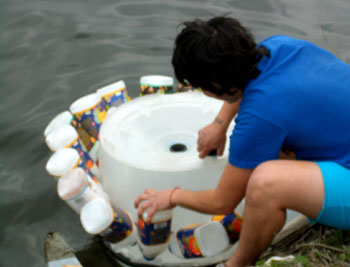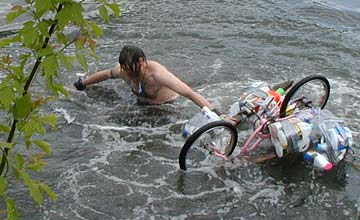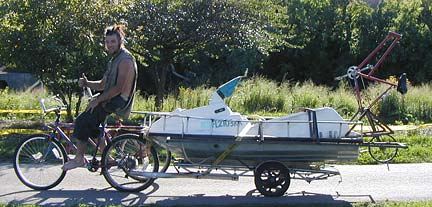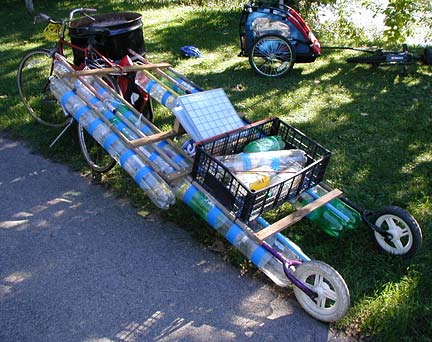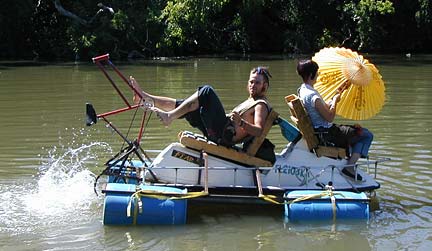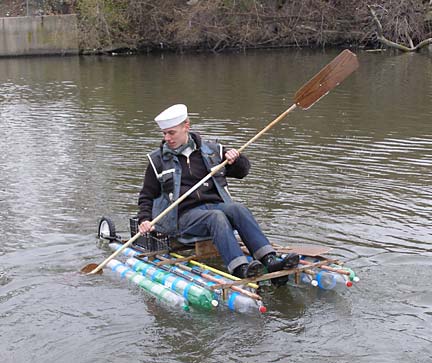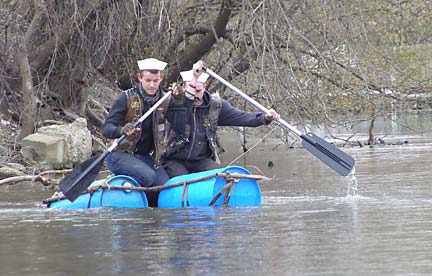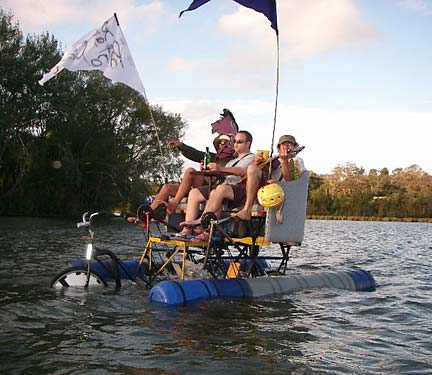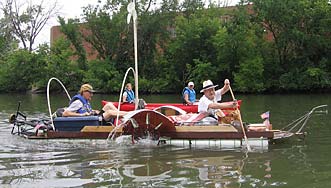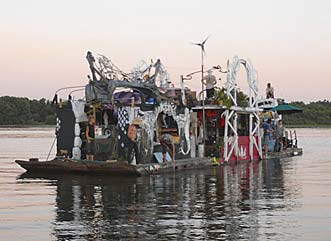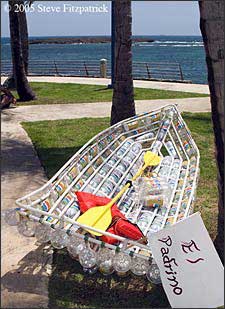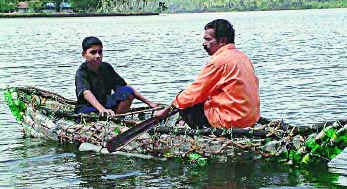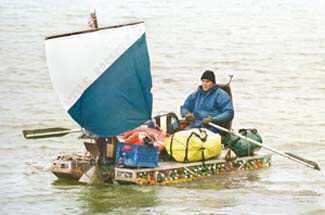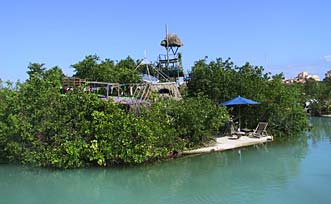Rats are as comfortable in the water as on land. They can tread water for days and swim long distances underwater. In Chicago, the waves of Lake Michigan may be daunting but the sluggish Chicago River is ideal for low-tech rat boats made from recycled materials of all kinds.
It doesn't matter what your boat is made from, just don't fall in! You don't want to know whats in that murky grey water.
The ideal rat boat would be an amphibious bicycle that could ride to the river, dive right in, return to land elsewhere and continue on its way. For now, we have only built trailer-carried boats that must return to their launch points.
Around the world, many people have experimented with home-made watercraft. From the sleekly engineered racers of human-powered boat clubs to the salvage vernacular of hippie houseboats in Sausalito, its not difficult to build your own home-built boat from common materials.
But the most spectacular trash boat of all has to be the Son of Town Hall, built by the Flying Neutrinos as a floating raft home, made of salvaged lumber and kept afloat on chunks of styrofoam. After several years in various harbors of the northeast in the early 1990s, the Neutrinos set off across the Atlantic using the only the wind and current to push their boat all the way to the coast of Ireland and then on to France. Bouyancy, of course, is the key to floating a boat. You can assemble your recycled materials into a sealed hull like a conventional boat. Or you can collect bouyant objects to build a raft. Styrofoam can sometimes be scavenged, but discarded bottles, buckets and jugs are far more common. You will need to collect a lot of them. A liter of water weighs one kilogram. So your raft will need to displace more liters of river water than your weight (and the boat's) in order to achieve positive buoyancy:
If you have negative buoyancy in the equation (not enough flotation) your boat will sink, but at neutral bouyancy you will just be sitting in the water, between sinking and floating. If you want to stay dry you will need positive bouyancy, so collect more bottles, at least l50% more than the neutral buoyancy equation above requires. The more bouyancy the better, you never know what you extras you might want to take along. Making a stable raft that won't flip over is another matter! |
||||||||||||||||||||||||||||||||||
